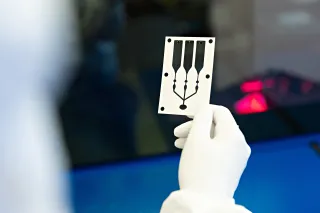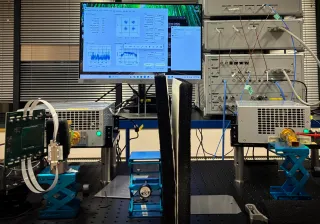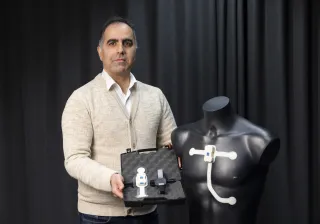The war in Ukraine has created an increased need among states, authorities, corporations, and ordinary people for timely and reliable information and, in particular, future prospects. However, war is only one situation – albeit the most horrific one – where there is an increasing need for improved situational awareness. Whether we are talking about transport, border control, farming or health care, situational awareness needs to be increasingly accurate and real-time.
Self-driving cars, robots that treat and operate on patients, sensors that observe draught and field pests, satellites that control our borders. These days, there is intelligence, sensors, and indicators everywhere. We can use them to formulate an increasingly clear picture at an ever-faster rate of where we are right now and what should be done next. Thanks to the up-to-date and comprehensive situational picture, robots and machines are already now capable of making independent decisions, and artificial intelligence will transform the role of human beings even further.
The Russian war of aggression in Ukraine has contributed to bringing situational awareness to everyone’s attention. Both states, companies and individual people want to know what is happening in the war right now and what it means. In times of both war and peace, situational awareness plays a growingly important role in our daily lives, and it is used more and more in any given field.
A perfect situational picture is composed of small parts
In practice, to create a situational picture that is as accurate as possible, different indicators, sensors, satellites and the data they create have to be coordinated. Reliable telecommunication plays an equally important role. In other words, it is crucial that data can be transferred unchanged to where it is needed. No matter whether the decision is made by a machine or a human being, the most complete overview to support decision-making can be created by combining and analysing data.
For instance, farming is no longer in the hands of farmers alone, but modern precision farming is already using all kinds of technology. In the future, cultivation conditions can be optimised by using situational awareness: sensors will measure soil moisture and nutrients and guide the irrigation and fertilisation process. Satellites and drones equipped with hyperspectral cameras and radars will gather information about crops and growing conditions during overflights and provide weather forecasts for analysis. Human beings do not necessarily have to do much more than inspect the situation every now and then – and if needed, make decisions on the required measures. And when the time is ripe, even the harvesting can be done by a self-driving combine harvester.
In order for the autonomous harvester to stay on the field instead of landing in a ditch, it must be capable of observing all sorts of things ranging from the shape of the terrain to soil permeability and height of stalks. Naturally, autonomous vehicles moving among people require even more accurate situational awareness to avoid accidents. Different sensors measure the distance to the road shoulder and other vehicles, observe restrictions as well as people and animals that unexpectedly jump in the way, estimate the effects of the weather, and even know the exact location. Vehicles can also communicate with each other and thus share situational information even more broadly. Autonomous marine transport and aeroplanes require similar situational awareness.
In hospitals, robots measure, transport, analyse and even treat patients, so that nurses and doctors can concentrate on matters that require human brains and hands. Thanks to artificial intelligence, such tasks are becoming fewer and fewer, but a sense of humanity is still needed to support decision-making.
An entire architecture at our hands
At VTT, we study and combine all the following: sensor development, data analytics, satellite technology and telecommunications, without forgetting cyber security. When creating a situational picture that is as perfect as possible, each of these areas complements the other. Nothing much can be done with data produced by independent sensors alone, if they cannot be combined with other data and if a precise analysis of the overall picture cannot be created while also keeping the data secure.
At the beginning of the year, the eastern edge of Finland became a NATO border and the interest in our borders has grown noticeably in the past few years in other ways, too. Situational awareness is of paramount importance at the border. VTT’s technology enables the creation of a situational picture for border control, making it possible to identify with increasing accuracy what is crossing the border, when and where, and to share this information with those for whom it is important.
Situational awareness technology under development for companies enables new applications and new business. There are opportunities for both technology developers in all the aforementioned areas (sensors, analytics, telecommunications, and data security) as well as in the user-side, in innovating new applications and services. Unique products and services can be created for the market by integrating different types of excellence. Here at VTT, we help companies turn situational awareness into a competitive advantage.
Did the topic gain your interest? Contact us, we’ll be happy to tell you more.
Read more about VTT’s research related to situational awareness.





